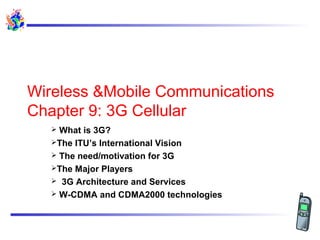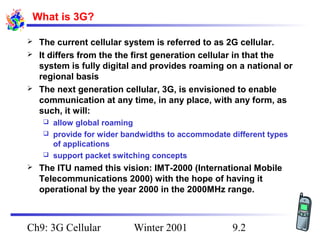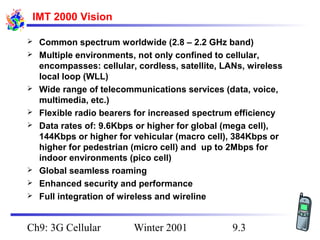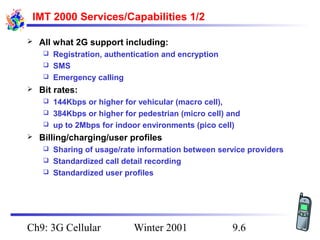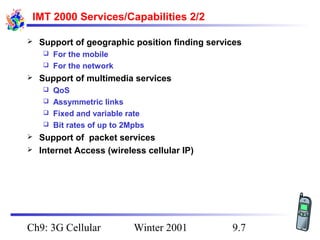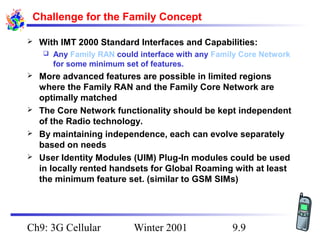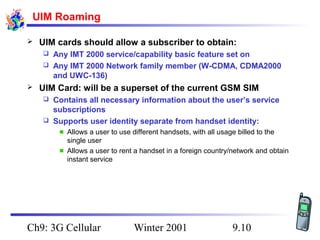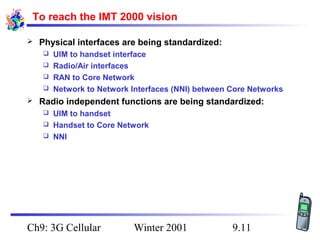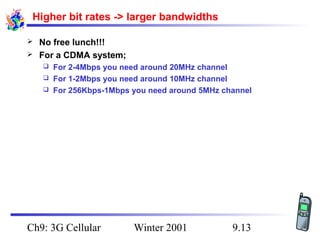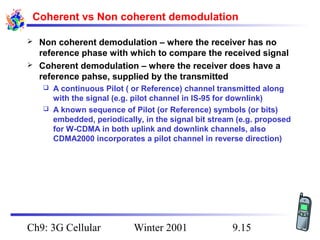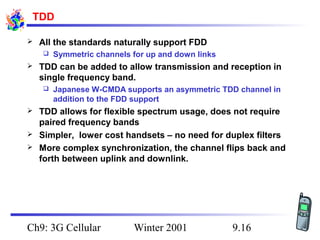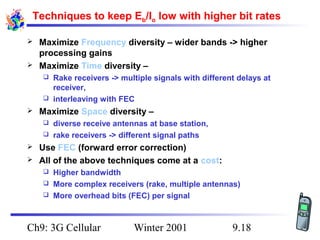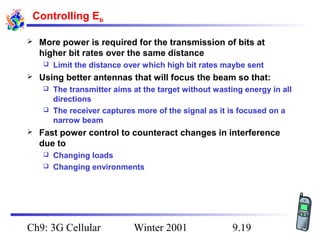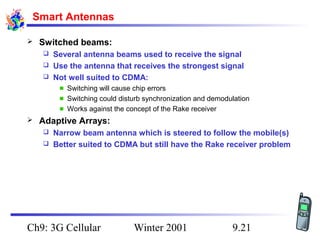3G cellular networks aimed to provide higher bandwidth and data rates, global roaming, and support for multimedia services. The ITU defined the IMT-2000 standard to enable these capabilities. Major 3G technologies included W-CDMA, CDMA2000, and UWC-136. Early 3G networks rolled out starting in 2001, with the Japanese and Koreans among the first to offer services meeting IMT-2000 specifications. Key technologies like higher bandwidths, packet switching, coherent modulation, smart antennas, and interference management helped 3G networks provide improved performance over 2G networks.
